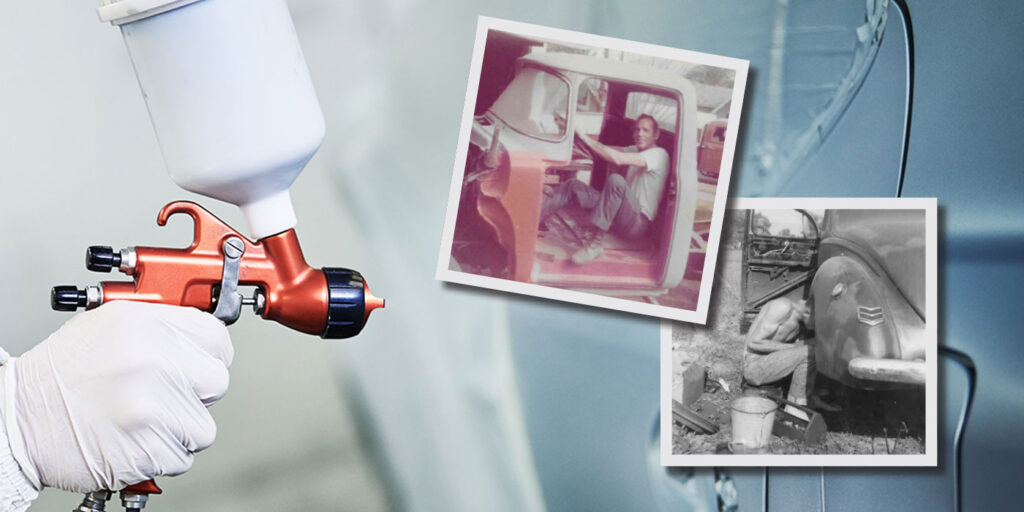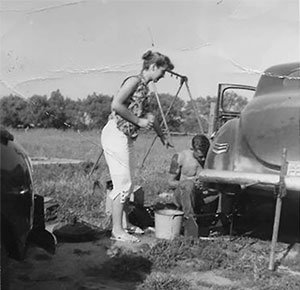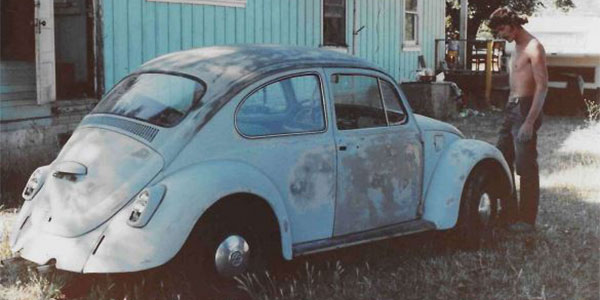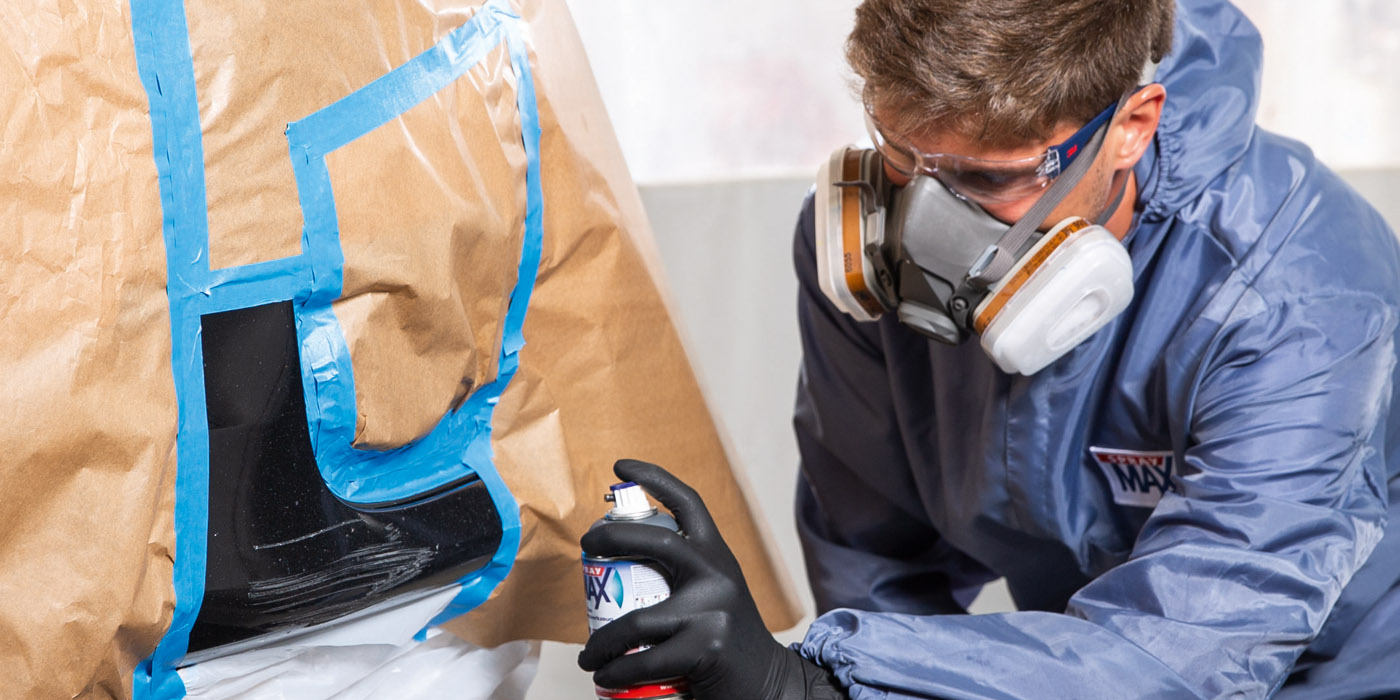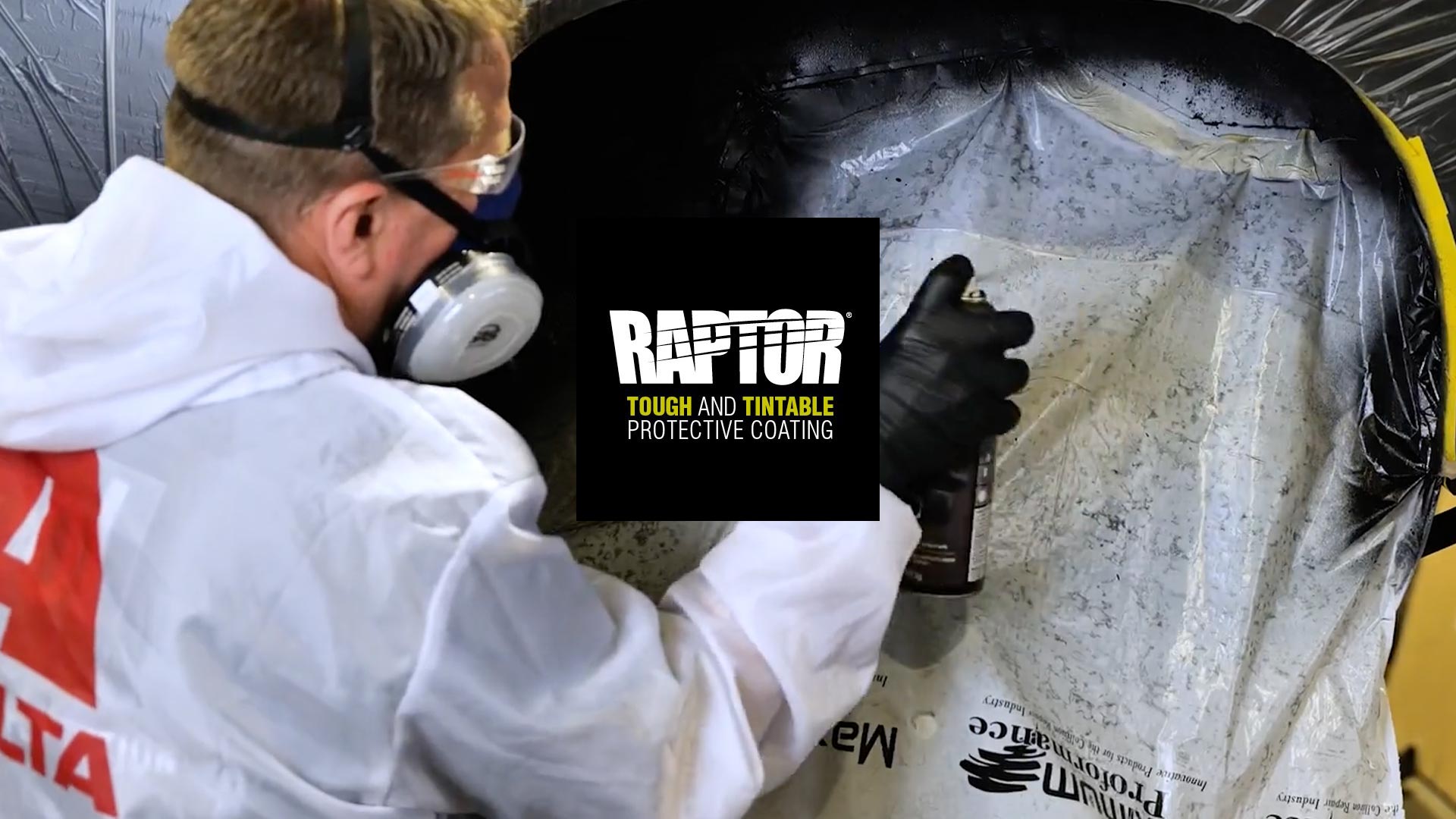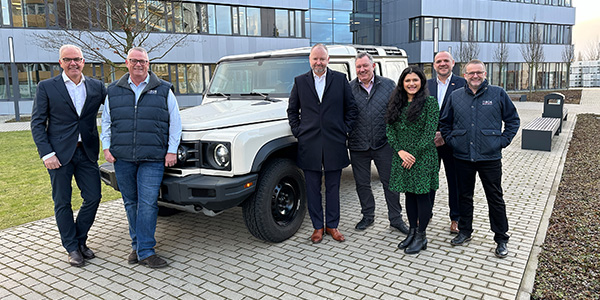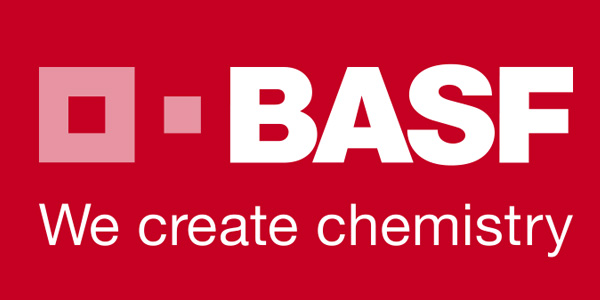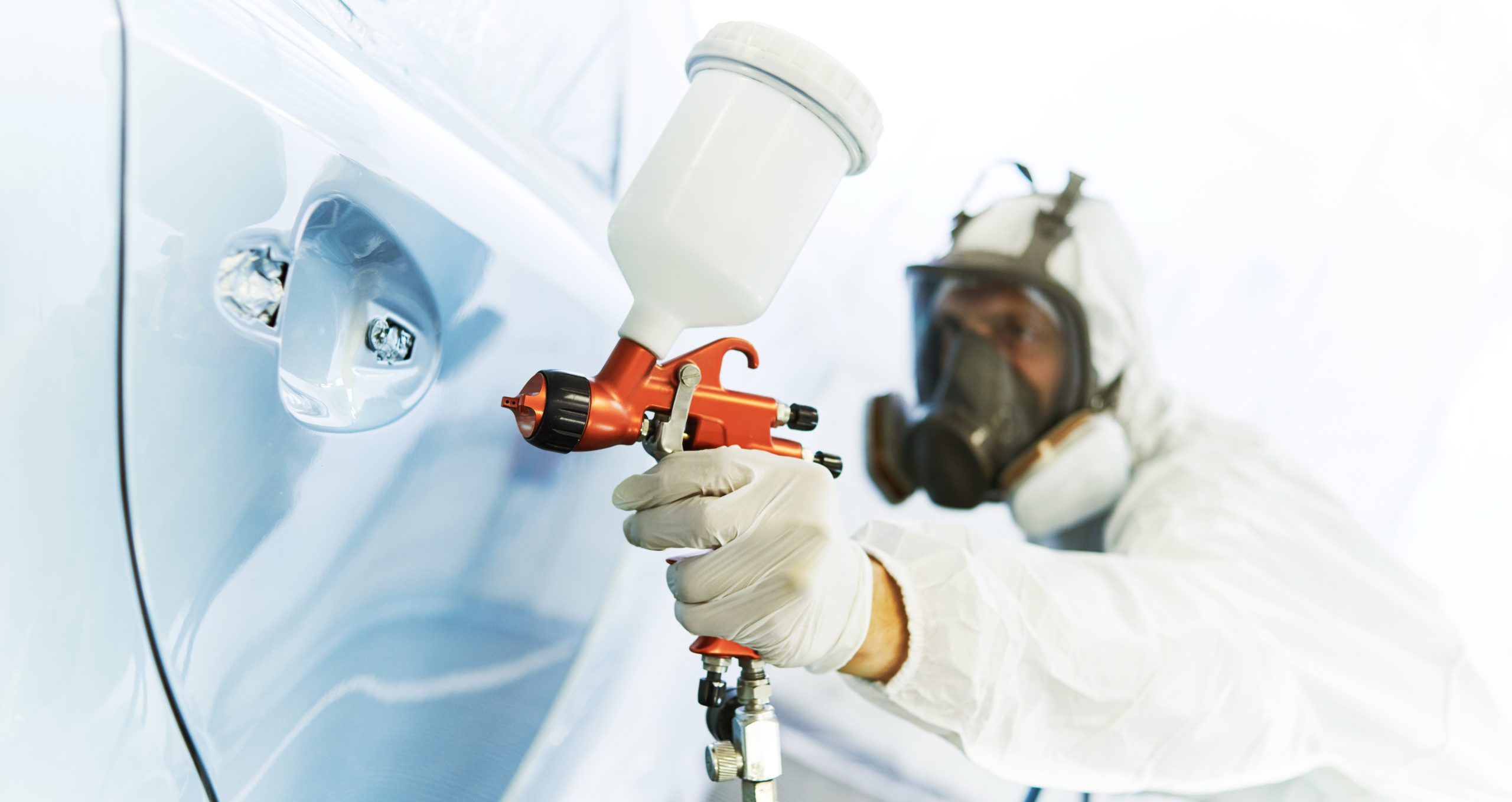When my father got started in the collision repair business in the late 1940s, the body technicians were known as metal men and they were predominately combo guys — meaning they took the job start-to-finish, painting what they repaired. And they repaired more than they replaced. Body filler as we know it today had yet to be invented; his body filler was lead.
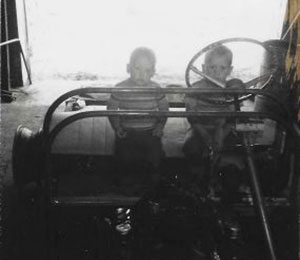
My brother and I couldn’t get enough of whatever dad was doing — and I went on to follow him into the trade.
All bias aside, my father was a truly talented metal man who was ahead of his time. He embraced the continual changes to vehicle manufacturing and the tool requirements those changes brought. He had his own MIG welder, resistance welder and plasma cutter before many shops did, yet he always remained one heck of a “torch man.” He welcomed the challenges the collision industry gave birth to as collision repair was not only his vocation — it was his avocation. I suspect he painted as a way of wrapping up the repair, not necessarily because he loved painting. He was perfectly content to pass the spray gun to me when I showed interest, and we worked side-by-side for many years, both at work and at home.
By the time I started professionally some 40 years after Dad did, there were clearly defined roles between painters and “bodymen,” as body techs were called back then.
Getting Paid
When dad was swinging a hammer, the pay structure was commission as opposed to flat-rate or hourly. Forty percent of the labor rate was common, and when a metal man showed up with his own MIG welder (which is fairly common these days but not then), he could command a 50% rate.
What we generally see these days is flat-rate based on experience. Experience leads to efficiency, and efficiency leads to a bigger paycheck. We did not get paid for showing up or by the hour — the flat-rate was multiplied by the labor hours on the estimate, and that was what we were paid for the job. If the estimate paid 10 hours and your rate was $10, then $100 is what you made — whether it took you two hours or 20 hours. If you took shortcuts to get it done faster, and that resulted in an unacceptable repair, then you did it over … this time for free. There was a built-in incentive to do it properly but as fast as you can. Oftentimes, a progressive pay scale was an additional incentive a shop might offer where the flat-rate would increase with the volume of hours. We still see this occasionally these days.
The Computer Age
When I got started, the estimates were handwritten, and the computerized estimating programs were just gaining traction. Judgement time on repairs was more common, and the go-to estimator’s bible was the Mitchell Manual. Direct repair programs (DRPs) hadn’t come into existence yet, and there was generally a feast-or-famine cycle of work based on the shop’s manager and his relationship with insurance adjusters as well as the reputation of the shop.
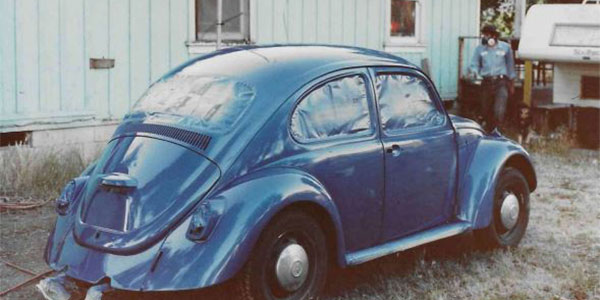
These days, we see more accurate estimates with fewer supplements and generally faster repair times. We can largely thank Mike Anderson for his excellent tutorials and seminars on writing estimates, working with the insurance companies and vendors, and parts management.
While one could say the percentage of the labor rate to the body tech or painter has shrunk — and one wouldn’t be wrong — one must also acknowledge that the industry as a whole has gotten much more efficient throughout the repair process. Additionally, the growing pains associated with inevitable industry changes seem a bit easier to work through. Some of these changes in the paint shop include:
- Computerized color retrieval information as opposed to micro-fiche
- Digital scales for paint mixing instead of volume scales
- Color cameras from just about every major paint manufacturer, which simply did not exist decades ago.
Continuing Improvement
The industry continues to be a good trade where a high school graduate — or dropout, in some cases — can go on to make a fantastic living. While there are formal training institutions, such as WyoTech and even community college options, the fact is that a young person can enter the trade as a car washer with zero experience. With determination, hard work and time, that youngster can receive on-the-job training and eventually become a painter making good money.
What one can earn will depend on a few things: the work ethic, experience and workmanship of the painter (read: reputation); the shop where the painter works —and this relates to the quality and thoroughness of the estimates; and finally, the market in which the shop is located. Several years ago, BodyShop Business published an earnings survey and, as I recall, the average wage for a painter was in the $60,000 range. There are many markets where a painter can earn six figures — not bad for a high school graduate. Naturally, there are some markets where a painter will make much less.
Today, we have an “invisible” portion of the paycheck, or more accurately, the compensation, which simply didn’t exist in this industry several decades ago. This, of course, is the benefit package consisting of medical and dental insurance, 401K employer-sponsored plans, vacation and sick pay. Some employers even offer tuition assistance as part of the package. I do not think the industry as a whole or employers in particular have done a good job of communicating the value of the entire compensation, but the fact is that the compensation package has gotten better over the decades.
A Safer Environment
Product changes have often been fueled by regulatory requirements, as has PPE (personal protective equipment) usage. While most of us, as creatures of habit, do not run towards change, the information regarding hazards and protection is easier to find and employ than ever before. Another free market-driven benefit has been the proliferation of PPE, such as affordable nitrile gloves and positive-pressure breathing units. Some of these units are fresh air and some still use filtration, but both are superior to any sort of half-mask respirator. Paint suits too have evolved and are available in both light summer and heavier winter styles.
Mobility
One of the great advantages to this trade is that it can be practiced just about anywhere. There is no geographical niche area where you must live. While living in the Northwest, my Hawaiian-born wife and her mother wanted to move back to Hawaii. I said, “We can paint cars anywhere,” so we relocated to the Aloha State, where I got plugged right back into making a good living.
I believe it’s even easier to relocate to another state today thanks to the national-chain consolidators which, between them all, have locations in nearly every state in the lower 48 as well as Alaska and Hawaii. As with every industry, there is currently a labor shortage, and while this is a problem for shops, it provides leverage for a skilled painter and opportunity for anyone wanting to pursue a career as an automotive refinisher.
Recession-Proof
There are many trades that enjoy some of the benefits of ours, but not many that have built-in mechanisms which, in effect, “recession-proof” the industry. For starters, you must have insurance to drive. No one is looking to get in an accident and wreck the car, but everyone will have it repaired — that’s why we have insurance!
Additionally, fleet vehicle and lease cars demand that even minor damage be addressed promptly. Lastly, in markets where tourism is a piece of the economy, rental cars are abundant, and landing a contract with Enterprise or Alamo can keep a shop pretty busy.
Summary
Even though I’m admittedly a bit biased, I can think of no other industry where a young man or woman can start in an entry-level position and excel to an extremely comfortable living — without ever going to formal schooling or training and avoiding the tuition debt altogether. Furthermore, in most cases, there is no requirement to join a union to participate. It is still a fantastic trade!

